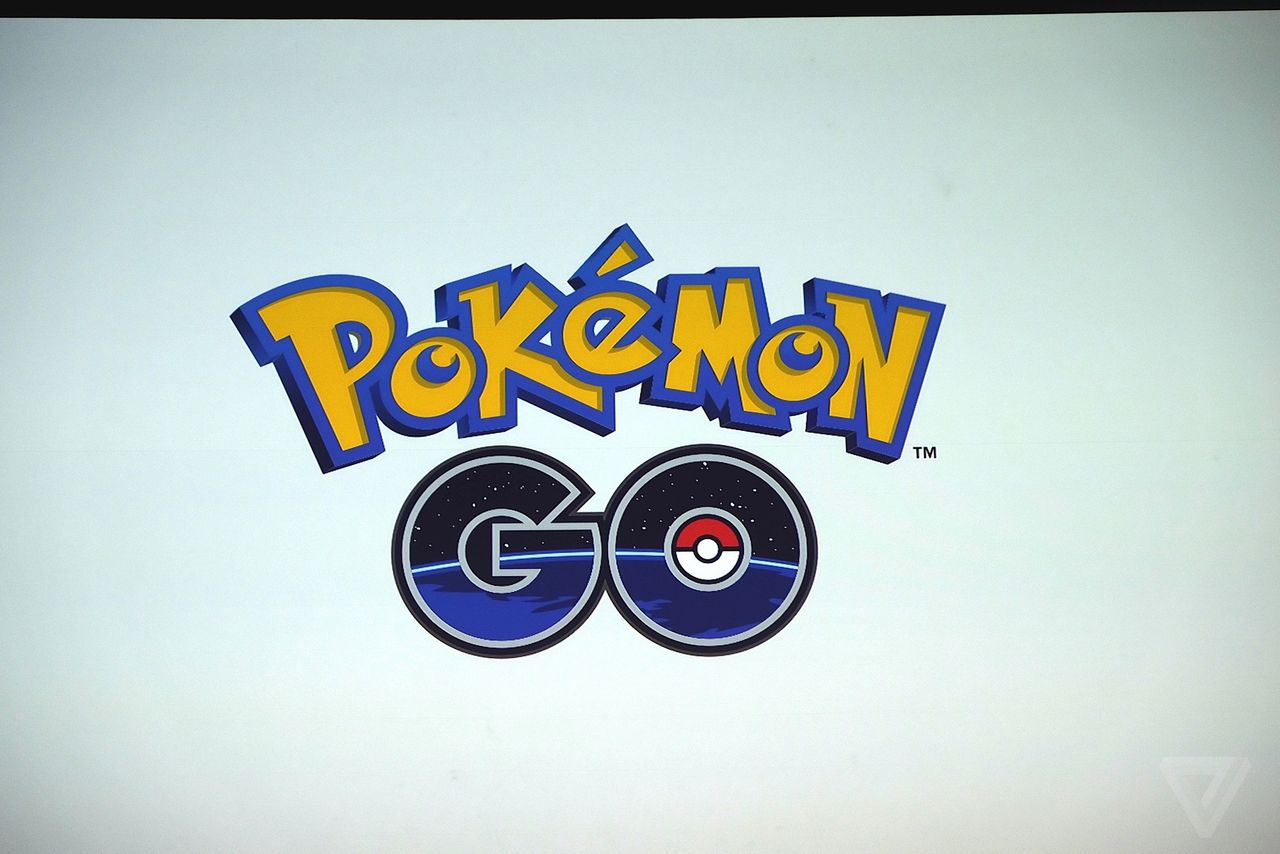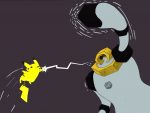If you’ve gone outside at all in the last few days, you’ve certainly noticed that the sidewalks are now teeming with “Pokémon Go” players.
And if you’re of the traditional, well-adjusted, non-gaming variety, you’ve likely had some alarming moments — for example, passing by a lone 21-year old-guy loitering outside a Panera Bread staring at his phone and muttering, “Dammit, Lickitung, get in my ball!”
It’s understandable that normal people would be disoriented by the glorious transformation the world has undergone in barely any time at all. Out of context, the legions of pasty gamers and distracted longboarders suddenly flocking around signposts and scurrying through the grass at 1:30 in the morning must be puzzling, to say the least.
So, dear normies: To put it simply, the nerds have really crawled out for this. “Pokémon Go” is what avid fans of the franchise have been waiting for since they were toting their Gameboy Advances around in their backpacks and trading legendaries on the swing set.
College campuses especially are getting hit hard by the colliding of the two fast-emerging factions: ordinary, ho-hum class-goers and rabid Pokémon masters squinting at their phones in the summer sun. And as a firsthand witness to UCF’s radical Poké-morphosis, it is nothing short of comical.
Still confused? Still inching away from that one guy screaming about how this place is invested with bats and rats (or was that “Zubats” and “Rattatas”)? Not to worry — I’m here to translate all the spirited gamer talk for you, my precious real-lifer.
Why the Nerds Are Outside
The whole premise of “Pokémon Go” is that it makes real life into a Pokémon game. You create an avatar and immediately set off into the streets, kicking aside small children and shoving past old grannies to catch the creatures that spawn on your phone as you move.
Here’s the kicker (besides your foot to little Johnny’s uvula, that is): the game doesn’t really work inside. No rare Golducks be spawnin’ within the comfy confines of your dorm room, no sir — the point is to drag gamers’ sorry, vitamin D-deficient asses out into the sun for once.
Of course, I say that as I sit here at work farming double Poké Stops every five minutes (don’t worry, I’m getting there) and catching Eevees between sentences. But I digress. The point is, I can’t exactly go after a Jigglypuff while parked in a swivel chair bathed in sweet, sweet air conditioning. Believe me, I’ve tried.
And at my university in Florida, currently suffering from 12 hours of 95+ degree weather per day, the sights are even funnier. To catch anything besides the occasional stray Doduo wandering by your psychology classroom, hightailing it to the nearest shady tree or hunching over your phone to envelop it in your own shadow is required to shield your screen from the blinding sun.
Further drenching daytime players in sweat and tears is the algorithm for finding rare Pokémon. You can track how near or far a Pokémon is by the number of footsteps under it — three means Bellsprouts mocking you in the distance, zero means he’s nestled in the front pocket of your sweatshirt.
Needless to say, if you’ve been scratching your head over all the deranged running around and aimless wandering through parking lots people are doing, just know that they’re chasing invisible monsters. Don’t mind them.
So that would explain both the random phone-starers dallying under grocery store awnings and the dehydrated loners traversing the grassy hills behind Publix at 3 in the afternoon — not to mention the scores of Pokémon hunters lurking around campus at midnight in an effort to escape the blazing heat.
But what of the crowds?
Why the Nerds Are Clustering
The main reason for the veritable cowherds of PoGo players, besides the newfound geeky companionship, is a beautiful thing called Poké Stops. If you get near enough to a Poké Stop, you can gather free items like Poké Balls (the things you trap defenseless Weedles in) and healing potions (the medicine you apply to your Weedles’ limp bodies after you force them to fight for you).
The GPS function of the game has assigned Poké Stops to tons of local businesses, restaurants, statues, landmarks, random plaques on the side of the honors building that no one’s ever read in their lives — the list goes on. And they refresh every five minutes, so naturally, they tend to attract cliques of Poké Ball farmers exhausted from zipping around town all day in pursuit of an elusive Dragonair.
So if you were wondering why your local Panda Express is suddenly packed to the brim with gamers, that would be why. In fact, someone probably slapped a Lure Module on it, an item that attracts more Pokémon to a Poké Stop for 30 minutes.
But undoubtedly the most dramatic feature of the game that’s seeped out into the real world — the thing everyone’s yelling about — is the Pokémon gyms.
Gyms are like Poké Stops in that their locations are assigned to nearby landmarks, but they’re sparser and tend to be in more popular spots central to all the action. There are three teams you can join to topple and claim the gyms once you reach level 5: Team Valor (red), Team Mystic (blue) and Team Loser — er, Instinct (yellow).
If you’ve overheard any groups of sack-rattlers on the sidewalk tossing trash talk to and fro, it’s absolutely because of this heated three-way team rivalry that’s blossomed almost instantly. I’ve heard the whiners — ahem, members — of Team Instinct hollering “GOLD TEAM RULES!” across the Student Union more times than I care to enumerate.
Here at the University of Central Florida, Team Valor and Team Mystic (*cough* best team *hack*) are locked in a cutthroat battle for the gym at the flagpole, and right beneath my apartment at Burger U, they’re giving out BOGO burgers to anyone of the team color currently in control of their gym.
It’s madness out there, guys. Absurd, glorious, battery-killing madness.
Why the Nerds Are Excited
“Pokémon Go” is already nothing less than revolutionary. It’s the first really widespread, successful use of augmented reality, the interactive fusing of video games with the real world. It’s doing a million impossible things all at once: bolstering local businesses, filling the streets with the unlikeliest of exercisers, making all the 20-somethings who were born attached to their Gameboys by the umbilical cord feel like adventurous little kids again.
The game’s only been out for a week, and already I’m fooling my pedometer into thinking I’m a healthy, active human being. I think I speak for most players when I say that nothing has ever motivated me to scuttle out from under the covers and leave my apartmen t— at 7:30 a.m., for Pete’s sake — quite like the promise of enslaving another Poliwag for the collection. Hell, in just the past week since its U.S. release, Nintendo’s stock has skyrocketed by $9 billion, and “Pokémon Go” has already surpassed Twitter in daily active users.
The sheer scope and reach of the new Pokémon phenomenon is ridiculously unprecedented, sweeping every corner of the country in a matter of days. Seriously, the milk in my fridge has existed longer than this game.
But most of all, “PoGo” is bringing people together like nobody’s fucking business. Just step outside and the effect is staring you right in the face — rowdy friendlies who’ve never played a Pokémon game in their lives are mingling with diehard fans who would otherwise never in a million years be outside this much, in any weather.
The procession of nerds I can see from my window alone at any hour of the day is ludicrous to the point of high comedy. And don’t get me started on the crowds of sun-fearers who creep out after nightfall. It’s practically a gaming convention out there! College campuses are goldmines for gyms and rare spawns as far as the eye can see, especially compared to most peoples’ middle-of-nowhere, one-Poké-Stop hometowns.
This is the big one, folks. We’re living in the future, which is turning out to be more wondrous and whimsical than anyone could have imagined — a world where you can catch a Pikachu in your underpants on the walk from your front door to the mailbox.
Augmented reality is not only the future of video games, but the future of life in an technological society. “Pokémon Go” is just the first explosive spearhead of the movement, so I encourage even the proudest of non-gamers to try it out, just to see what all the hoopla is about.
Of course, I’m just happy I can finally catch a Vulpix on my way to class. At long last, Pokémon is real.
It’s a good time to be alive.

















